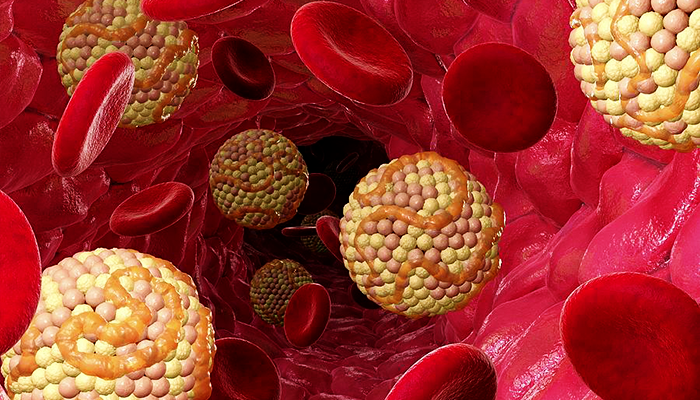If you are a woman who desires to be at your optimal health, working in conjunction with physician who is focused on holistic and integrative medicine approaches, then this is a must read article for you.
What is Heart Disease?
Heart disease refers to diseases of the heart and blood vessel system, as known as cardiovascular diseases which includes:
- Coronary heart disease
- Heart attack
- High blood pressure
- Stroke
- Chest pain/angina
- Rheumatic heart disease
Coronary heart disease is the primary concern, as it is the leading killer of Americans. It’s a disease of the blood vessels of the heart that causes heart attacks. A heart attacks occurs when an artery becomes blocked, preventing oxygen and nutrients from getting to the heart. A stroke results from a lack of blood flow to the brain, or, in some cases, bleeding in the brain.
What risk factors contribute to heart disease?
Risk factors are traits or lifestyle habits that make a person more likely to develop a disease. Some risk factors for heart disease cannot be changed, like age, race or family history. Other risk factors can be changed, or at least modified such as:
- Poor diet
- Physical inactivity
- High blood pressure
- Obesity
- Smoking
- Kidney dysfunction
- Hyperglycemia
- Dyslipidemia
Race and Ethnicity – Some groups of women are more likely to develop cardiovascular disease than other groups. Black women are 24% more likely to die of coronary heart disease than white women, and their death rate for stroke is 83% higher.
Age – Older women have a greater chance of developing cardiovascular diseases than younger women, partly because the tendency to have heart-related problems increases with age. Older women, for example, are more likely to develop high blood pressure and high blood cholesterol levels, to be diabetic, to be overweight, and to exercise less than younger women.
Menopausal Women – Women going through menopause are more apt to get cardiovascular diseases, in part because their bodies produce less estrogen. Women who have had early menopause, either naturally or by means of hysterectomy, are twice as likely to develop coronary heart disease as women of the same age who have not begun menopause.
The Truth about Heart Disease in Women
Prevalence:
- 8.6 million women die from heart disease worldwide annually, accounting for a third of all deaths in women.
- 3 million women die from stroke annually with additional risk to women who use oral contraceptives in combination with smoking.
- 8 million U.S. women are living with heart disease and 4 million angina; 35,000 are under age of 65.
- 435,000 U.S. women have heart attacks annually; 83,000 are under age 65; 35,000 are under 55. The average age – 70.4.
- 42% of women who have heart attacks die within 1 year, compared to 24% of men.
- Under age 50, women’s heart attacks are twice as likely as men to be fatal.
- 267,000 women die each year from heart attacks, which kill six times as many women as breast cancer. Another 31, 837 women die each year of congestive heart failure, representing 62.6% of all heart failure deaths.
At-Risk:
- 71% of women experience early warning signs of heart attack with sudden onset of extreme weakness that feels like the flu – often with no chest pain at all. Medical professionals are challenged to respond to women’s milder symptoms, acting with insufficient guidelines.
- Nearly 2/3 of the deaths from heart attacks in women occur among those who have no history of chest pain.
- Smoking, diabetes and abnormal blood lipids erase a woman’s estrogen protection.
- Women who smoke risk having a heart attack 19 years earlier than non-smoking women.
- Women with hypertension experience a risk of developing CHD 3.5 times that of females with normal blood pressure. High blood pressure is more common in women taking oral contraceptives, especially in obese women.
- Women with diabetes have more than double the risk of heart attack than non-diabetic women.
- Diabetes doubles the risk of a second heart attack in women but not in men and affects many more women than men after the age of 45.
- Obesity leads to an increased risk of premature death due to cardiovascular problems like hypertension, stroke and CAD.
- The age-adjusted rate of heart disease for African American women is 72% higher than for white women, while African American women ages 55-64 are twice as likely as white women to have a heart attack and 35% more likely to suffer CAD.
- Marital stress worsens the prognosis in women with heart disease.
Compared to Men:
- Men’s plaque distributes in clumps whereas women’s distributes more evenly throughout artery walls. This results in women’s angiographic studies being misinterpreted as “normal”.
- Women wait longer than men to go to an emergency room when having a heart attack and physicians are slower to recognize the presence of heart attacks in women because “characteristic” patterns of chest pain and EKG changes are less frequently present.
- After heart attack, women are less likely than men to receive beta blockers, ACE inhibitors and aspirin – therapies known to improve survival. This contributes to a higher rate of complications after heart attacks in women, even after adjusting for age.
- 38% of women and 25% of men will die within one year of a first recognized heart attack.
- Women are twice as likely as men to die within the first few weeks after suffering a heart attack.
- 46% of women and 22% of men heart attack survivors will be disabled with heart failure within six years
- Women are two to three times as likely to die following heart bypass surgery. Younger aged women between the ages of 40-59 are up to 4 times more likely to die from heart bypass surgery than men the same age.
- Studies show women who are eligible candidates to receive life-saving clot-buster drugs are far less likely than men to receive them.
- Since 1984, more women than men have died each year from heart disease and the gap between men and women’s survival continues to widen.
- Women receive fewer heart disease procedures than men, however, more is not necessarily better in this setting and the best course of treatment for a woman with heart disease has yet to be established.
- Women’s hearts respond better than men’s to healthy lifestyle changes, yet only 2 percent of the NIH budget is dedicated to prevention.
- Women comprise of only 24% of participants in all heart-related studies.
Heart Healthy Habits
As Americans have learned to control blood pressure, blood cholesterol levels, blood sugar (if diabetic) and make healthful lifestyle changes, in their smoking, eating and exercise habits, death rates for heart attack and stroke drop, but, cardiovascular disease remains the leading cause of death for American women.
After reading those stats, how motivated are you to change your habits? Perhaps you had a recent physical and were told you have high cholesterol or high blood pressure. Maybe you noticed your energy level dwindling, you get short-winded easily and you just aren’t feeling your best. Whatever the reason, you recognize the need for change. The next step is to ask yourself if you are ready to make heart-healthy changes.
If you are at least 70% ready to make healthy changes then let us help you succeed!
Advanced Cardiometabolic Testing
Technology in the arena of heart disease has advanced substantially over the past 10 years. We are now able to look well beyond the “Bad Cholesterol” myth. Studies prove that the concern is not the “Bad Cholesterol” but how the body produces, transports and retrieves the cholesterol. The number of LDL “bad” cholesterol, the density of these particles and the apolipo proteins which guide these particles are much more important than the level (amount) of bad cholesterol which your body has.
In addition, we are now able to look at the genetic code to determine the genetic predisposition to heart disease (Apolipoproteins).
Inflammation, the body’s response to any inflammatory agent, can now be much more thoroughly evaluated by the use of L-PLA, heart sensitive C-reactive protein, myeloperoxidase and fibrinogen values.
Our ability now extends beyond the use of aspirin to fight inflammation with the ability to measure the omega fats (3, 6 and 9) in each person.
Ultimately, knowledge is power. By evaluating your glucose, hemoglobin A1c (HbA1c), and lipid profile, cardiometabolic blood testing provides important information about your risk of developing heart disease and Type 2 diabetes. This panel uses a risk algorithm based on your results, anthropomorphic data, and family history, so your Forum Health provider can recommend effective lifestyle interventions and therapies that meet your individual needs.
Ready to learn the truth about your heart?
Learn more on how our advanced cardiometabolic testing.





